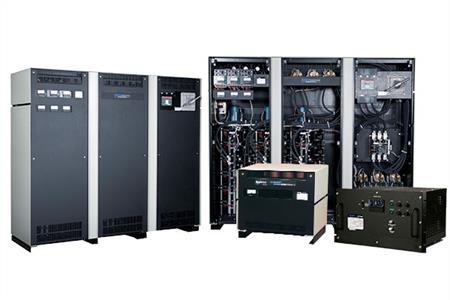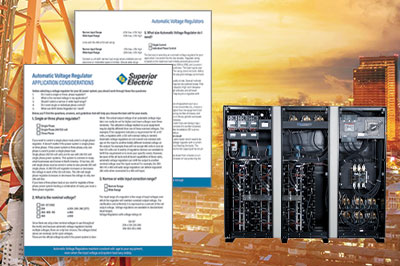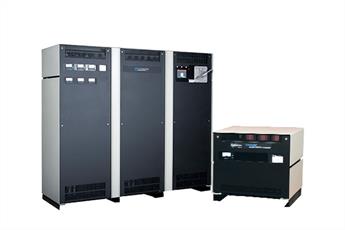Top 5 Features of Automatic Voltage Regulators
Automatic voltage regulators maintain a constant voltage level to electrical equipment loads that require a steady, reliable voltage supply. With a variety of voltage regulation tools to choose from, it can be challenging to select the best one for your equipment loads. It is essential to know what to look for in an automatic voltage regulator; otherwise, your equipment will suffer, costing you time and money. Below, we list the top five features of a high-quality, automatic voltage regulator to help ensure you find the best match for your application.
What is an Automatic Voltage Regulator?
An automatic voltage regulator (AVR) is an electronic device that maintains a constant voltage level to electrical equipment on the same load. The AVR regulates voltage variations to deliver constant, reliable power supply. Without an automatic voltage regulator, voltage can sag, spike or surge and damage electrical devices.

When to Use an Automatic Voltage Regulator vs. Conductors?
Typically, automatic voltage regulators function where voltage regulation can not be achieved by changing the size of the conductor or the source. In electrical equipment such as alternators, the load can shift suddenly. In this case, the excitation system must also change to provide consistent voltage under the new load condition. The automatic voltage regulator operates in the exciter field and changes the exciter output voltage, and the field current.
Specifying an Automatic Voltage Regulator? Download Our Application Selection Guide:

How To Choose An Automatic Voltage Regulator?
Below, we list the top five features of a high-quality, automatic voltage regulator to help ensure you find the best match for your application.
1. Voltage Regulation
Optimal voltage regulation is achieved when the value of voltage is equivalent to all electrical equipment loads. Several factors can affect voltage regulation, including wire and cable size and type, transformer reactance and cables, motor starter, circuit design, and power factor. Regardless of these potential obstacles, voltage regulation must be selectable to an accuracy of ±1%. This requirement eliminates three-phase unbalance problems and minimizes voltage deviations.
2. Input Voltage Range
The first step in selecting the best automatic voltage regulator is specifying your input voltage range. The input voltage range should be broad and shifted because line voltages drop more than they increase. This feature allows for more low correction, rather than high correction. It also allows the automatic voltage regulator to be more configurable to all buck or boost, giving it maximum voltage correction for extreme cases.
3. Low Impedance
Impedance is the resistance of a component to the flow of electrical current, measured in ohms. The goal of an automatic voltage regulator is to achieve low impedance. Interaction between the load current and source impedance can cause low voltage, harmonic distortion, and voltage unbalance. Ideally, your automatic voltage regulator would avoid all of this if it had low impedance.
4. Load Compatibility
Voltage regulation solutions must be compatible with the specified load to ensure its operation and to avoid interfering with the operation of other loads connected to the same power source. High performing automatic voltage regulators should be able to handle loads with high starting currents, all power factors, and high crest factors. To prevent instability, the regulator's speed of response must be designed to work with the electronic power supplies used in much of today's equipment.
5. Voltage Accuracy
The primary job of an automatic voltage regulator is to make voltage levels more accurate, but what is the optimal accuracy level for your application? Voltage accuracy is dependent on the critical load requirement. Typically, automatic voltage regulators function in circuits where voltage regulation can not be achieved by changing the size of the conductor. The five characteristics listed above are critical for an automatic voltage regulator to perform reliably in demanding applications. In applications where voltage impulses, spikes, and transients are a significant concern, you should also consider Transient Suppression as a critical feature.
Related Posts
Learn how variable transformers reduce harmonic distortionDownload our selection guide to specify automatic voltage regulators for your application
Learn more about the different types voltage regulation technology and when to use them here
Power problems and their impact on machine performance
Featured Products
STABILINE® Automatic Voltage Regulators
STABILINE® Automatic Voltage Regulators for use on all AC power systems, up to 660 volts. The regulator maintains constant voltage to your equipment, even when the input voltage and system load vary widely. The Limited Range coil design allows for substantially higher current and power ratings without increasing unit size or weight.
Learn more »


